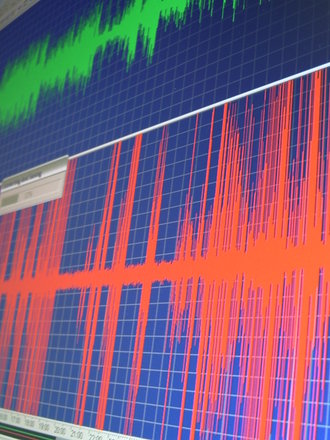Bit depth is an often misunderstood concept when it comes to audio formats and typically it’s confused with sample rate. You have probably checked some of your WAVE files and have seen them listed as 16 bit or 24 bit with a 44khz sample rate. The former is the bit depth of the audio file whereas the latter is the sample rate. Let’s discuss the difference between the bit depth versus sample rate now.
Bit Depth
First, bit depth represents how much room in decibels the audio has. The higher the bit depth, the more room from the noise floor it has. Each bit is the equivalent of 6dB, so by doing some fast math we can deduce that 16 bit audio has a range of 96 dB whereas 24 bit audio has a range of 144 dB. Different formats have different limitations for how much bit depth they can occupy. Digital audio files can have a bit depth of 24, so they have a lot more range in terms of decibels allowed as compared to its physical counterparts.
The compact disk, a physical medium, has a limitation of 16 bit audio. Vinyl has a capacity for slightly less, around 14 bit or 84 dB. Therefore, when you’re converting audio files in preparation of putting them on a CD, you have to dither, which is the process of converting the audio file down to a lower bit depth and shaving off part of that room so that it can physically fit on that medium. A higher bit depth again gives you more room to operate when you’re recording as there’s a much greater distance from the noise floor. Most people don’t need that kind of room when recording, but it’s still nice to have that extra space to give you a little more room to operate.
Sample Rate
Sample rate refers to the number of times per second which the audio is measured, or sampled in other words. So a sample rate of 44.1 kHz means that the audio is measured a whopping 44,100 times PER SECOND. A 96 kHz sample rate means the audio is measured, yep, 96,000 times per second. For this reason, a higher sample rate understandably produces a higher fidelity as it refers to reproducing the original audio upon playback. That said, very few people can actually detect a difference between a sample rate of 44.1 kHz and 96 kHz. This is partially because sampling the audio 44,100 times per second is more than enough to faithfully reproduce that audio upon playback. If you go beyond 44.1 kHz, you’re typically just creating a larger file needlessly.
For these reasons, 16 bit, 44.1 kHz audio is typically the standard for popular music today because it gives the audio more than enough care to represent and reproduce the original recorded audio. That said, a small handful people whether they be clients, labels, or occasionally even a self proclaimed audiophile themselves insist upon a higher bit depth and sample rate for their distribution or playback purposes.
